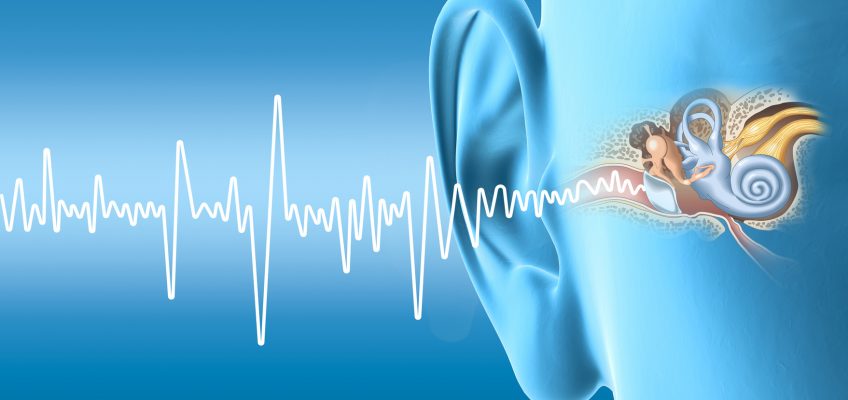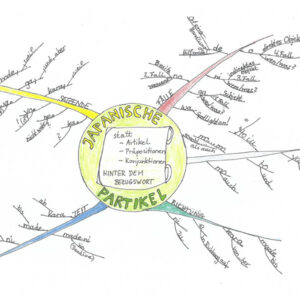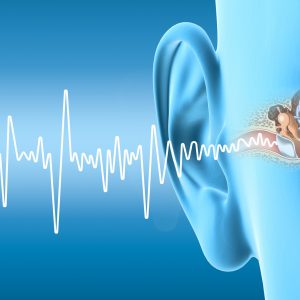„I’m hopeless at languages! No matter how much I want to learn a language, I’ll never be fluent. It’s not worth the effort.“ This is a well-known myth not only men embrace, but also women. It’s more predominant in cultures that are dominated by a single national language than such that give speakers of minority or native languages a stronger voice in education. At least in Germany boys are excused if they are not good at languages, as their knack for systematic thinking is catered to in mathematics and sciences. So for the rest of their lives they tend to believe, they are hopeless at learning langugaes.
Who is no good at languages?
Vera F. Birkenbihl was a German neuro-scientist who suffered of Asperger-Syndrome and had been judged to be unable to learn much in Germany, went to the United States to gain her degree. She kept stressing that nobody is no good at languages as long as he or she is able to speak, hear and understand language in the pure physical sense. So most human beings understand very well what the people around us are communicating (in our native language). And we usually can also read, as well as express ourselves clearly understandable in writing and orally.
However, when thinking of foreign languages, many people tend to believe the verdict of school teachers. After all, we didn’t like memorizing the vocabulary, studying the grammar rules and then constructing sentences with that knowledge. It’s hard to believe that there could be another way of learning a language, for example with the methods for brain-friendly learning Vera F. Birkenbihl devised.
Are multi-lingual people good at languages?
I must admit that having been raised bilingually with an English mother and a German father looks like it does give me an edge. For sure I have been hearing English even before I was born and some German, too, even if that voice was not as clear as that of my mother (as was explained in this article on the work of Dr. Alfred Tomatis). And this should have been similar for my younger sister. However, when at the age of 4 I realized that my mother DOES speak German, I took the easy road, refusing to speak English unless my grandparents were visiting, who clearly didn’t understand a word of German. I just didn’t want to be different from all the other kids at kindergarden. So my sister had two problems: a) She did not learn German as well as I did because my mother kept making certain mistakes and b) she didn’t learn any English. When we were visiting our relatives, she therefore became my first client when she wanted to communicate with our cousins. However, my sister was much better at French than at English even later on, so her gift of learning a foreign language easily just got expressed in another way. She had attended the same playful extra-curricular French classes as me and later on her best friend got married to a Frenshman. So what are the criteria for „being better at languages?“ It doesn’t even work the same way for multi-lingual children.
The one thing that I know about my abilities to learn languages is that being raised bilinually helped me to intuitively develop my own method (which was quite similar to the Birkenbihl Method). I read all the texts aloud, looked up new words and wrote their meaining in German into the text (of course not the textbooks provided at school, only into the copies we received in higher grades. However, as I kept reading the texts over and over, I mentally translated them word by word.
Hearing is the Basis for Speaking
Why am I telling you all of this? Well, there are good reasons for not all the people being good at learning languages to the same extent. The French orthorhinolarygist and psychophonoaudiologist Dr. Alfred Tomatis found out, that this is due to what we are able to hear. He found out that each language has its preferred frequecies: While slavonic languages comprise all frequecies from the low to the extremely high tones (128 – 11584 Hertz) , and German is still very broad band compared to other european languages with frequencies spanning from 100 to 3000 Hertz. English, however, is spoken within a bandwidth of between 2000 and 12.000 Hertz. Comparing this with the data for French (1000 – 2000 Hertz), Spanish (100 – 500 and 1500 – 2500 Hertz) and Italian (2000 – 4000 Hertz)1), you get an inkling, that these differences might have an influence on how these different peoples learn foreign languages.
At this point I would like to remind the reader that Tomatis once said: „The voice cannot pronounce what the ear cannot hear“. Given those big differences between the tones that can be discerned in various languages, it should no longer be a surprise that some people have difficulties in learning a foreign language. They might not be able to hear certain part of the foreign language. Note the rather narrow band of French. That could also be one of the reasons, why the French are not adopting foreign words into their language. Their sound will not be in harmony with those frequencies preferred by the French language.
It is Possible to Learn Hearing
But everywhere there are people who are really fluent in other languages no matter what their native language is. The ear and therefore the voice, too, can be trained. Alfred Tomatis for example, trained a few Frenchmen to speak English. His most famous disciple would be the actor Gérard Dépardieu, who learn to speak English so well that he could have this amazing career in Hollywood. During the 1970s Tomatis conducted some projects in Kanada and the US to develop teaching methods for foreign languages in combination with his apparatus called the „electronic ear“. 2) The efforts were made to give anybody a chance to be good at languages by learning to hear them before starting to try to speak them.
In his autobiography „The Ear and Life“ Alfred Tomatis also addessed the novel cassette tapes, which replaced the tapes in the 1970s. To him the Walkman was an unnecessary gadget, especially when it was used to seduce the young people to hear this loud rock music harmful to their ears whereever they were hanging out.
„Hearing“ via the skin to learn a language
50 years later there is a small device on which it is possible to store audio data of highest quality. This data then can be modulated onto ultrasonic waves to transport them via the skin into a person’s body. In this way anybody can „hear“ language subconciously and“ open up“ our ears for new sounds, as Tomatis would say. This may sound strange for many people as we mostly believe that we can only hear via the ears. However, it was also Alfred Tomatis, who found out that hearing via the ears is secondary. The ear is an instrument that produces energy from external stimuli. The low sounds, however, will not lead to stimulating the brain. And that is basically the calming effect of low tones, the α-waves. But the higher tones will stimulate the brain and enhance thinking.3)
These effects are also being used by the ISONO technology. The α-wavesare known to enhance learning in the sublimnial realm.
Become good at languages with the help of the ISONO device
As it has been mentioned various times, the ISONO- device acts as a turbo for learning a language: Hearing via the skin we can have a very powerful first contact with the foreign language just like we were being prepared for our native language before we were born: subconciously and via the skin. The new ISONO device is now being delivered with earphones. In the second phase of learning a foreign language, the learner will listen also actively via the ears, just like the baby after birth will hear it’s surroundings without understanding what is being said. „Actively“ also means, that the learner is starting to grapple with what he is hearing: He will ge a decoded version of the text of the audio. His job for now is to read along the word-by-word translation as he is listening to the audio. That way the vocabulary of the foreign language becomes synonyms to those of the native language. At the same time the learner also intuitively gets a grasp of the sentence structure. With this knowledge starting to speak the new langauge in the activation course will be very easy.
If you would like to know more about the ISONO device and how to learn a language with its help, please contact me. I will gladly explain the concept in more depth and help you in exploring a foreign language.
1) Alfred Tomatis: Das Ohr und das Leben, 1997, Walter-Verlag. S. 124ff
2) dito, S. 348
3) dito S. 317f








